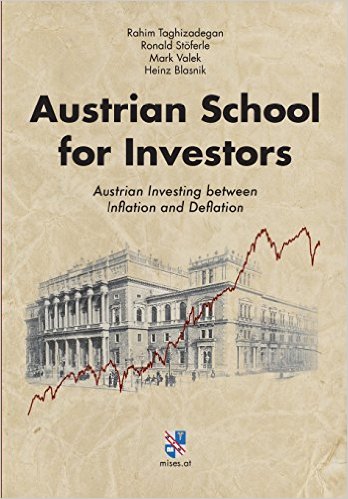Decolonization
The British Empire was the largest in history. At the end of World War II Britain had to start pulling out from its colonies. A major part of the reason was, ironically, the economic prosperity that had come through industrialization, massive improvements in transportation, and the advent of telecommunications, ethnic and religious respect, freedom of speech, and other liberties offered by the empire.
The colors represent the colonies of various nations in 1945, and the colonial borders of that time – click to enlarge.
Milestones in the Pursuit of Insolvency
A new milestone on the American populaces’ collective pursuit of insolvency was reached this week. According to a report published on Tuesday by the Federal Reserve Bank of New York, total U.S. household debt jumped to a new record high of $12.84 trillion during the second quarter. This included an increase of $552 billion from a year ago.
 US consumer debt is making new all time highs – while this post GFC surge is actually relatively tame, corporate and government debt have in the meantime exploded into the blue yonder. Nevertheless, this means consumers are also highly vulnerable to the coming crisis (which will look different from the last one, but will be perceived as just as, if not more devastating). [PT] – click to enlarge.
US consumer debt is making new all time highs – while this post GFC surge is actually relatively tame, corporate and government debt have in the meantime exploded into the blue yonder. Nevertheless, this means consumers are also highly vulnerable to the coming crisis (which will look different from the last one, but will be perceived as just as, if not more devastating). [PT] – click to enlarge.
Confused by Shadows
POITOU, FRANCE – This week, we are talking about theperishable nature of gods. Yesterday, the city fathers of our hometown of Baltimore let it be known that it was time to toss out the old deities.
 The Robert E. Lee and Thomas. J. “Stonewall” Jackson Monument in Baltimore, which the mayor inter alia wants to remove. Suddenly it has become fashionable to erase the memory of an important part of US history all over the country. By experience, this is typically done by authoritarian Marxists and fascists, as well as assorted radical Islamists. They are all famous for destroying monuments they don’t like or brushing people out of pictures when they are no longer considered to properly toe the line of the Fuehrer du jour. Democratic societies tend to remove the statues of former dictators and all around bad guys (such as e.g. Hitler, who has not been granted any monuments in Germany, which is understandable. The heroes of the Confederacy may be controversial, but removing all their statues seems quite the overkill – and obviously, it is mainly done to provoke a reaction. [PT]
The Robert E. Lee and Thomas. J. “Stonewall” Jackson Monument in Baltimore, which the mayor inter alia wants to remove. Suddenly it has become fashionable to erase the memory of an important part of US history all over the country. By experience, this is typically done by authoritarian Marxists and fascists, as well as assorted radical Islamists. They are all famous for destroying monuments they don’t like or brushing people out of pictures when they are no longer considered to properly toe the line of the Fuehrer du jour. Democratic societies tend to remove the statues of former dictators and all around bad guys (such as e.g. Hitler, who has not been granted any monuments in Germany, which is understandable. The heroes of the Confederacy may be controversial, but removing all their statues seems quite the overkill – and obviously, it is mainly done to provoke a reaction. [PT]
Photo credit: Jerry Jackson / Baltimore Sun
Suspicion Asleep
You have probably noticed it already: stock market volatility has recently all but disappeared. This raises an important question for every investor: Has the market established a permanent plateau of low volatility, or is the current period of low volatility just the calm before the storm?
 All quiet on the VIX front… what can possibly happen? [PT] – click to enlarge.
All quiet on the VIX front… what can possibly happen? [PT] – click to enlarge.
“Better than Goldilocks”
“Markets make opinions,” goes the old Wall Street adage. Indeed, this sounds like a nifty thing to say. But what does it really mean?
 The bears discover Mrs. Locks in their bed and it seems they are less than happy. [PT]
The bears discover Mrs. Locks in their bed and it seems they are less than happy. [PT]
Fools and Rascals
And it’s time, time, time
And it’s time, time, time
It’s time, time, time that you love
And it’s time, time, time…
– Tom Waits
Tom Waits rasps about time
Vladimir the Great Sums Up Pope Francis the Fake
Vladimir Putin has once again demonstrated why he is the most perceptive, farsighted, and for a politician, the most honest world leader to come around in quite a while. If it had not been for his patient and wise statesmanship, the world may have already been embroiled in an all-encompassing global conflagration with the possibility of thermonuclear destruction.
 Vladimir Putin is sizing up Pope Francis with his “good grief, where did they find that one” stare. Since the East-West schism of AD 1054 there have been differences between the Catholic and the Eastern Orthodox Church, one of which concerns the issue of papal primacy (which the Orthodox Church rejects, although it would be prepared to acknowledge the Pope as a primus inter pares). Under Pope John Paul II previous doctrinal differences were downplayed in favor of further rapprochement. In this John Paul II followed the spirit of the decree Unitatis Redintegratio promulgated by Pope Paul IV in 1964. As the time the Catholic Church altered its stance toward the Protestant and Eastern Orthodox Churches by no longer referring to them as “heretics and schismatics”, but rather as “dissidents and separated brethren”. John Paul II went a step further by declaring that the major theological differences between East and West should be viewed as complementary rather than conflicting. Said differences concern primarily Palamist doctrine, which emerged in the 14th century in the course of the dispute over Hesychasm. They revolve mainly around the nature of the Holy Trinity (specifically the so-called “filioque” clause, as well as Palamas’ differentiation between God’s essence and energy) and the rational (scholastic) vs. the mystical (Orthodox) approach to the faith. Laymen may well deem these controversies as examples of “how many angels can stand on the head of a pin” type disputes (consider e.g. that theologians fervently debated whether the writings of Gregory Palamas indicated that he regarded the essence-energy distinction as “real”, “virtual”, or “formal”). In times past, much could depend on how such doctrinal disagreements were resolved. Maximus the Confessor, a 7th century monk and theologian who was eventually canonized by both the Catholic and Orthodox Churches is a good example. His views on monothelitism (the interaction between Christ’s divine and human nature) initially led to his conviction as a heretic. In order to prevent him from spreading his alleged heresies, his tongue and right hand were cut off so that he could no longer speak or write and he was exiled. Less than twenty years after his death, he was fully rehabilitated; soon thereafter he began to be venerated as a saint. The East-West schism has been in place a lot longer, but a trend toward reconciliation emerged in the second half of the 20th century, with the Catholic Church adopting the view that its differences with Eastern Orthodox Churches were largely of an ecclesiastical rather than a theological nature. Most people think of the Catholic Church as inflexible, but in the words of Catholic theologian G. Philips: “The essence-energies distinction of Palamas is a typical example of a perfectly admissible theological pluralism that is compatible with the Roman Catholic magisterium”. John Paul II seems to have agreed with this view. In fact, the Eastern mystical concepts of khatarsis, theoria and theosis are far more apodictic than the rational “theological pluralism” permitted by today’s Roman Catholic Church. In short, the Eastern Orthodox Churches actually tend to be more inflexible and dogmatic in their outlook. It is little wonder that Putin – who sees himself as the temporal protector and patron of the Russian Orthodox Church – looks askance at a Pope who often sounds like a representative of Marxism-inspired “liberation theology”. [PT]
Vladimir Putin is sizing up Pope Francis with his “good grief, where did they find that one” stare. Since the East-West schism of AD 1054 there have been differences between the Catholic and the Eastern Orthodox Church, one of which concerns the issue of papal primacy (which the Orthodox Church rejects, although it would be prepared to acknowledge the Pope as a primus inter pares). Under Pope John Paul II previous doctrinal differences were downplayed in favor of further rapprochement. In this John Paul II followed the spirit of the decree Unitatis Redintegratio promulgated by Pope Paul IV in 1964. As the time the Catholic Church altered its stance toward the Protestant and Eastern Orthodox Churches by no longer referring to them as “heretics and schismatics”, but rather as “dissidents and separated brethren”. John Paul II went a step further by declaring that the major theological differences between East and West should be viewed as complementary rather than conflicting. Said differences concern primarily Palamist doctrine, which emerged in the 14th century in the course of the dispute over Hesychasm. They revolve mainly around the nature of the Holy Trinity (specifically the so-called “filioque” clause, as well as Palamas’ differentiation between God’s essence and energy) and the rational (scholastic) vs. the mystical (Orthodox) approach to the faith. Laymen may well deem these controversies as examples of “how many angels can stand on the head of a pin” type disputes (consider e.g. that theologians fervently debated whether the writings of Gregory Palamas indicated that he regarded the essence-energy distinction as “real”, “virtual”, or “formal”). In times past, much could depend on how such doctrinal disagreements were resolved. Maximus the Confessor, a 7th century monk and theologian who was eventually canonized by both the Catholic and Orthodox Churches is a good example. His views on monothelitism (the interaction between Christ’s divine and human nature) initially led to his conviction as a heretic. In order to prevent him from spreading his alleged heresies, his tongue and right hand were cut off so that he could no longer speak or write and he was exiled. Less than twenty years after his death, he was fully rehabilitated; soon thereafter he began to be venerated as a saint. The East-West schism has been in place a lot longer, but a trend toward reconciliation emerged in the second half of the 20th century, with the Catholic Church adopting the view that its differences with Eastern Orthodox Churches were largely of an ecclesiastical rather than a theological nature. Most people think of the Catholic Church as inflexible, but in the words of Catholic theologian G. Philips: “The essence-energies distinction of Palamas is a typical example of a perfectly admissible theological pluralism that is compatible with the Roman Catholic magisterium”. John Paul II seems to have agreed with this view. In fact, the Eastern mystical concepts of khatarsis, theoria and theosis are far more apodictic than the rational “theological pluralism” permitted by today’s Roman Catholic Church. In short, the Eastern Orthodox Churches actually tend to be more inflexible and dogmatic in their outlook. It is little wonder that Putin – who sees himself as the temporal protector and patron of the Russian Orthodox Church – looks askance at a Pope who often sounds like a representative of Marxism-inspired “liberation theology”. [PT]
Photo credit: ANSA
Mathematical Certainties
Based on the simple reflection that arithmetic is more than just an abstraction, we offer a modest observation. The social safety nets of industrialized economies, including the United States, have frayed at the edges. Soon the safety net’s fabric will snap. This recognition is not an opinion. Rather, it’s a matter of basic arithmetic. The economy cannot sustain the government obligations that have been piled up upon it over the last 70 years.
 Growing wrinkle coefficient… as the global population increasingly ages, the “pay-as-you-go” social security and pension Ponzi schemes of developed welfare states are inexorably careening toward insolvency. [PT]
Growing wrinkle coefficient… as the global population increasingly ages, the “pay-as-you-go” social security and pension Ponzi schemes of developed welfare states are inexorably careening toward insolvency. [PT]


 Speculators have lately warmed up to precious metals – this is also evident in a large increase in net speculative long positions in the futures markets [PT]
Speculators have lately warmed up to precious metals – this is also evident in a large increase in net speculative long positions in the futures markets [PT]


 Yanking the Bank of Japan’s Chain
Yanking the Bank of Japan’s Chain Prepare for Another Market Face Pounding
Prepare for Another Market Face Pounding What Went Wrong With the 21st Century?
What Went Wrong With the 21st Century? Bitcoin Forked – Precious Metals Supply and Demand Report
Bitcoin Forked – Precious Metals Supply and Demand Report The Future of the Third World
The Future of the Third World Seasonality: Will Patterns that Worked in the Past Also Work in the Future?
Seasonality: Will Patterns that Worked in the Past Also Work in the Future? Czar vs. Pope
Czar vs. Pope Bitcoin Has No Yield, but Gold Does – Precious Metals Supply and Demand Report
Bitcoin Has No Yield, but Gold Does – Precious Metals Supply and Demand Report Is Historically Low Volatility About to Expand?
Is Historically Low Volatility About to Expand? Why There Will Be No 11th Hour Debt Ceiling Deal
Why There Will Be No 11th Hour Debt Ceiling Deal Will They Haul Off Trump’s Statue, Too?
Will They Haul Off Trump’s Statue, Too? Bad Ideas About Money and Bitcoin
Bad Ideas About Money and Bitcoin






![[Most Recent Quotes from www.kitco.com]](http://web.archive.org./web/20170822183822im_/http://www.kitconet.com/charts/metals/gold/t24_au_en_usoz_2.gif)
![[Most Recent Quotes from www.kitco.com]](http://web.archive.org./web/20170822183822im_/http://www.kitconet.com/charts/metals/gold/t24_au_en_euoz_2.gif)
![[Most Recent Quotes from www.kitco.com]](http://web.archive.org./web/20170822183822im_/http://www.kitconet.com/charts/metals/silver/t24_ag_en_usoz_2.gif)
![[Most Recent Quotes from www.kitco.com]](http://web.archive.org./web/20170822183822im_/http://www.kitconet.com/charts/metals/platinum/t24_pt_en_usoz_2.gif)
![[Most Recent USD from www.kitco.com]](http://web.archive.org./web/20170822183822im_/http://www.weblinks247.com/indexes/idx24_usd_en_2.gif)




